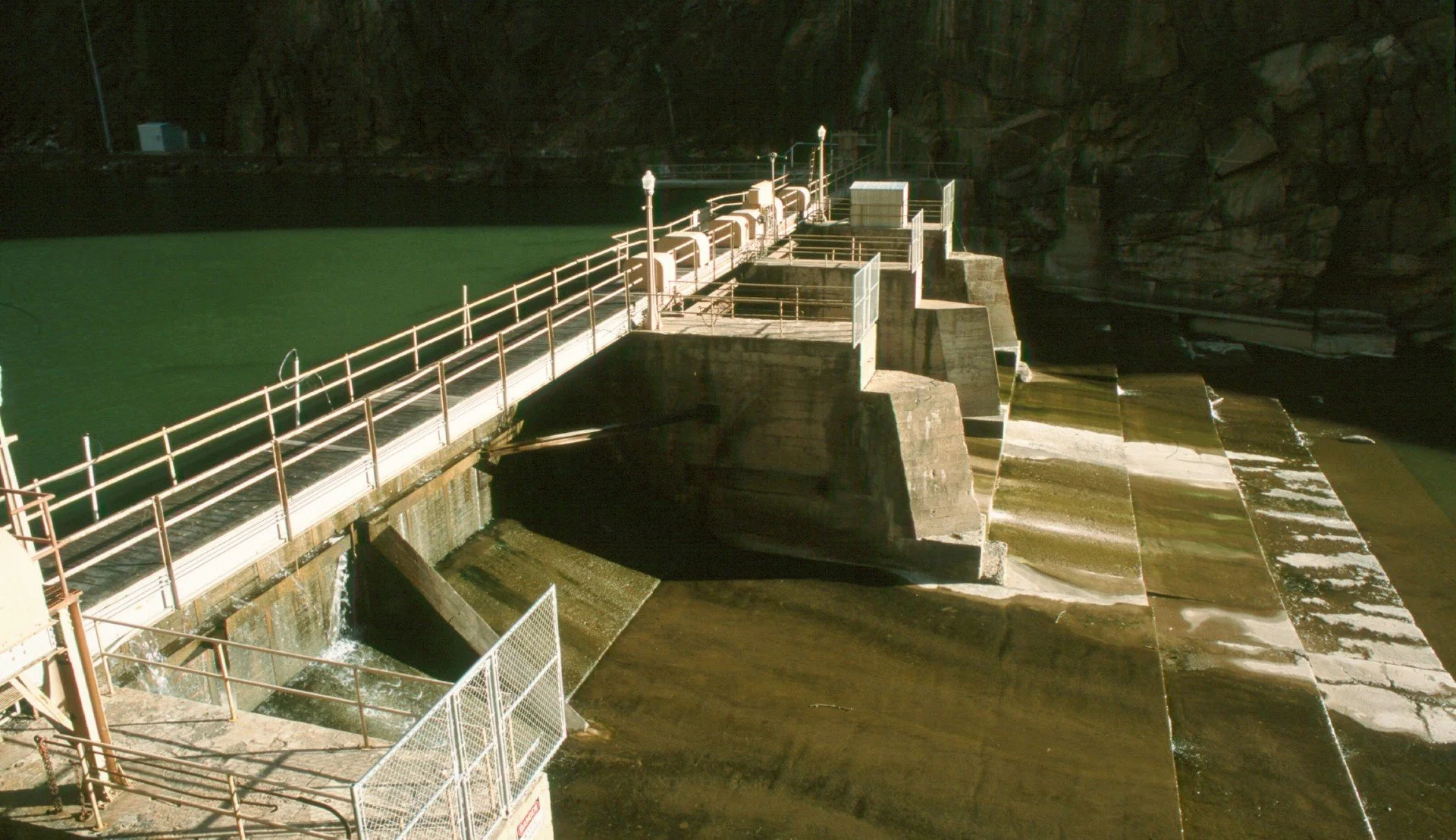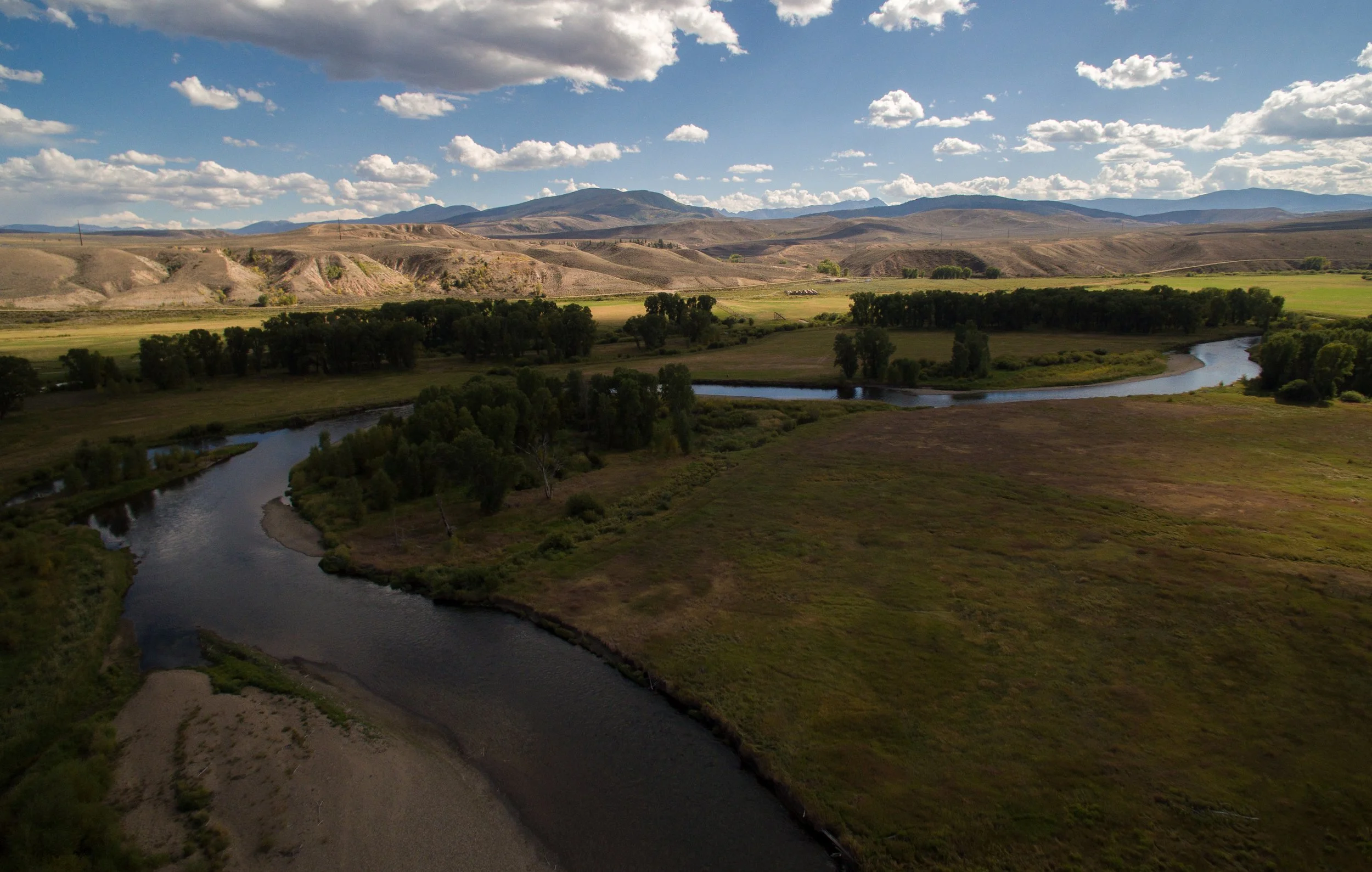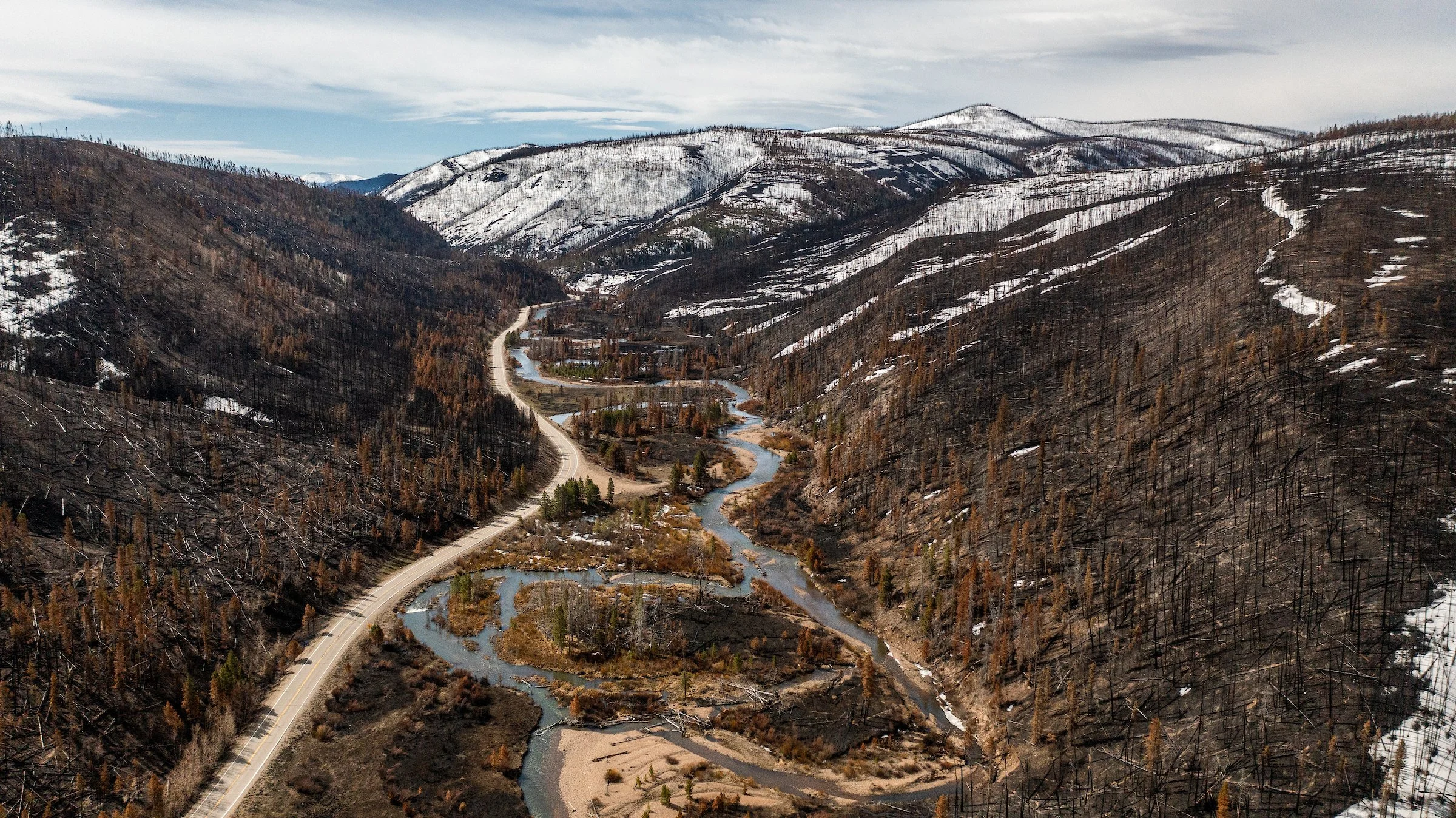Last Friday, the Bureau of Land Management (BLM) issued a Record of Decision authorizing oil and gas leasing atop the Roan Plateau in western Colorado. CTU is reviewing the details of the final Record of Decision, but it is based upon the BLM's plan in its final Environmental Impact Statement (EIS) - a plan that failed to include adequate protections for fish and wildlife. The BLM's decision effectively dismissed the concerns of hunters, anglers, and conservationists who were troubled by their proposed plan and final EIS. It came despite a request from Colorado Governor Bill Ritter for a 120-day delay, to allow his administration time to review the plan and coordinate with BLM on issues and concerns. The BLM appears committed to moving forward - and quickly - to issue leases atop the Roan.
This Thursday, the U.S. House of Representatives is expected to take up the Interior Appropriations bill, and to consider an amendment proposed by Representatives John Salazar and Mark Udall, that would place a funding restriction on BLM that would prevent them from issuing leases atop the Roan Plateau in the next year. The amendment would provide a much-needed "time out" to allow Congress, the Ritter Administration, conservationists, and other stakeholders to work with BLM on a more appropriate long-term plan for the Roan. Please contact your Representative, let them know that you are an angler (also a hunter if you hunt), and urge them to vote "Yes" on the Salazar/Udall proposal for a one-year funding limitation for leasing on the Roan Plateau. If you live in Representative Salazar or Udall's district, please contact them and thank them for their leadership on this issue. It is okay to leave a message after hours. A list of Colorado's delegation and their contact information appears below. You can also email Governor Ritter to thank him for his support of conservation on the Roan.
BACKGROUND:
Within the Roan Plateau there are some of the singularly most remarkable and unique natural creations in Colorado. There is an abundance of deer and elk that spend summers on top of the Roan Plateau and for whom the cliff areas along the southern and eastern sides of the plateau provide essential winter range. The top is a mix of rolling grassland, aspen and spruce forests and unique hanging gardens. In three of the streams exists very rare conservation populations of Colorado River Cutthroat Trout - populations of high genetic integrity that are highly valuable in conservation and recovery of the species. On the western side, these same streams tumble from the Roan as two of the highest waterfalls in Colorado.
In the midst of the ongoing energy development boom, the Roan Plateau has been an island of refuge - until now. The Roan Plateau lies atop some of the most dramatic cliff scenery in Colorado. The Roan Plateau comprises a very small area by comparison to the rest of the public and private lands being opened for energy development. It should also be noted that 80 to 90% of the gas beneath the Roan Plateau can be reached by directional drilling from around the base with no need to drill from the top. There is simply no need to sacrifice sensitive habitats in order to secure energy resources.
Unfortunately, the BLM issued a proposed management plan for the Roan that calls for drilling along the top. The plan's habitat protections are woefully inadequate. For example, while "no surface occupancy" sounds like a high level of protection for sensitive watersheds, in areas to be protected by "no surface occupancy" restrictions the BLM plan would actually allow surface occupancy for oil and gas development for two years or more! Publicly-touted limitations on the extent of surface disturbance at any given time actually refer to active construction - far more of the Plateau will actually be occupied at any given time. And most troubling: the BLM's own analysis indicates that loss of the cutthroat trout populations is a likely result of their proposal.
Please contact your U.S. Representative and Senators today and urge them to support the Salazar/Udall amendment to protect the Roan Plateau now, before BLM sells leases and sets the Roan on an irreversible course for habitat degradation and fishery loss. The BLM recently issued its Record of Decision for the Roan, so the need for Congressional action is urgent - otherwise, leasing could begin as soon as this fall!
To learn more about the Roan Plateau and CTU's concerns with BLM's plan, visit our Roan Plateau web page. A copy of Governor Ritter's letter to the Secretary of the Interior also appears below.
CONTACTS:
House of Representatives
1st District: The Honorable Diana DeGette (303) 844-4988 (Denver) or (202) 225-4431 (Washington); or comment online
2nd District: The Honorable Mark Udall (303) 650-7820 (Westminster), (970) 827-4154 (Minturn), or (202) 225-2161 (Washington); or comment online
3rd District: The Honorable John Salazar 970-245-7107 (Grand Junction), 970-259-1012 (Durango), 719-587-5105 (Alamosa), 719-543-8200 (Pueblo) or 202-225-4761 (Washington); or comment online
4th District: The Honorable Marilyn Musgrave (970) 663-3536 (Loveland), (720) 494-4336 (Longmont), (970) 352-4037 (Greeley), (970) 522-1788 (Sterling), (719) 456-0925 (Las Animas), (970) 867-4414 (Ft Morgan), or (202) 225-4676 (Washington); or comment online
5th District: The Honorable Doug Lamborn (719) 520-0055 (Colorado Springs), (202) 225-4422 (Washington), or comment online
6th District: The Honorable Tom Tancredo 720.283.9772 (Centennial), 303-688-3430 (Castle Rock), 720-283-7575 (Littleton), or 202.225.7882 (Washington), or comment online
7th District: The Honorable Ed Perlmutter (303) 274-7944 (Lakewood), or (202) 225-2645 (Washington), or comment online
Governor Bill Ritter:
email to: Governor.ritter@state.co.us
Governor Ritter's letter to the Interior Department:
June 11, 2007
U.S. Department of the Interior
Secretary Dirk Kempthorne
1849 C Street, N.W.
Washington DC 20240
Dear Secretary Kempthorne:
I am writing today to express my extreme disappointment with your decision to deny the State of Colorado’s request for a 120-day period to review the Roan Plateau Resources Management Plan prior to your issuing the Record of Decision. I am equally disappointed by your decision to lease the Roan for oil and gas development at this time.
As a new state Administration, we requested the limited additional review time to have the opportunity to recommend approval or modification of the plan, particularly with the enormous public concern over future leasing decisions. As you know, the Roan is a place of exceptional environmental and recreational qualities, and is of great importance to local communities. The 75,000 comments received by the Bureau of Land Management during the public review process reflected a 98% desire to refrain from leasing the top of the Roan. Your decision to ignore these public comments and limit my Administration’s participation in the process undermines efforts to build what should be a cooperative federal/state relationship.
Equally concerning is your immediate push to lease the Roan at this time. The Plateau is surrounded by other BLM land where the agency has already committed to extensive drilling. For example, your White River Management Plan adjacent to the Roan calls for 22,000 new wells over the next 15 years. The nearby Glenwood/Kremmling Management Plan calls for an additional 15,000 new wells. The Little Snake and Hiawatha Management Plans call for 6,000 additional wells. These projections are additive to tens of thousands of wells projected on nearby private lands. With approximately 120 rigs currently available in Colorado, it will be many years before the Roan would be needed to meet additional demand. There is absolutely no reason why certain special places, like the Roan, cannot be deferred for leasing while these other projects go forward.
BLM Director James Hughes’ reliance on the Naval Shale Oil Reserve statute as the reason for expedited leasing of the Roan is clearly a misstatement of the law. Nothing in the statute prevents deferring leasing decisions during the near term. In fact, BLM’s original set of alternatives for the Roan included “no-drill” options.
Similarly, Director Hughes’ reference to an earlier Colorado Department of Natural Resources plan for the Roan omits the fact that an election was held in Colorado, and that I lead a new Administration. The citizens of this State are concerned about the management of our public lands, the scale and pace of energy development, and the ability of our local communities to plan for and manage the extraordinary impacts that inevitably come with increased leasing and extraction. I am intent on finding the balance between protecting our environment, traditional economies, and special places with allowing and planning for responsible future oil and gas development.
Your decision has led me to take a more active role in working with Congressmen John Salazar and Mark Udall, as well as other members of Colorado’s Congressional delegation, to support funding limitations on the Department of Interior’s Appropriations Bill, or other legislation that will restrict BLM from going forward with leasing of the Roan during the coming year.
Finally, I share Director Hughes’ concern about the impact of his decision on the cooperating agency relationship between Colorado and the Department of Interior. This relationship must be based on a mutual respect for our respective values and missions. In the past, this relationship has worked to overcome initial disagreements and to find mutually acceptable land management plans. Unfortunately, the Department of Interior’s actions on the Roan undermine this past spirit of cooperation.
Sincerely,
Bill Ritter, Jr.
Governor







